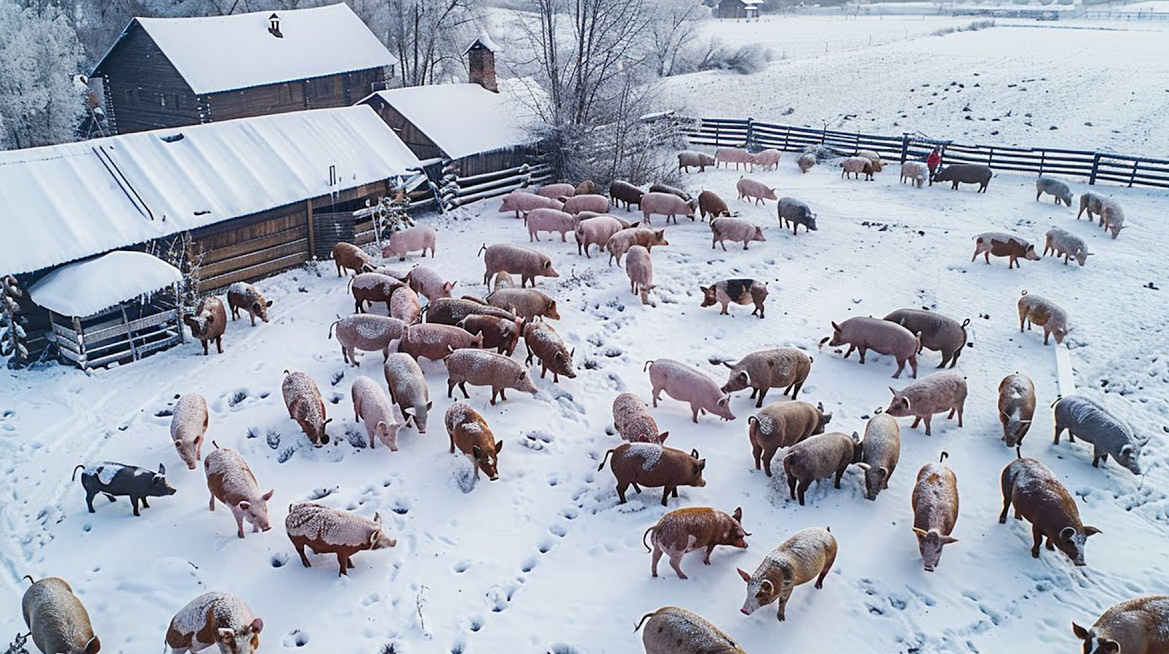Russian pork producers target EU’s share of China’s pork market

Russian pork producers are aiming to capture 10% of China’s pork import market in the coming years from a standing start, seeking to take advantage of trade tensions between the European Union and China, the world’s biggest pork consumer
By Olga Popova and Gleb Bryanski – Reuters
Russia did not export any pork to China until February, when Beijing authorised three Russian producers to sell pork into the $3.5 billion Chinese import market, which is dominated by EU producers with a 51% share.
The trade adds to the growing economic ties between Russia and China in the face of increasing sanctions against both countries by the West.
The EU recently set provisional duties of up to 37.6% on electric cars imported from China to counter what it says are unfair subsidies. In response, China named Danish, Dutch, and Spanish pork firms as targets in an anti-dumping probe.
“For us, these trade tensions represent a chance to showcase our competitiveness in the Chinese market,” Yuri Kovalyov, the head of Russia’s National Union of Pig Breeders, told Reuters, adding that producers were not seeking to exploit the tensions on purpose.
Kovalyov said Russia’s goal was to supply 10% of China’s pork imports within three to four years.
It will face stiff competition from other major pork exporters, such as Brazil, plus rising Chinese output. Demand for pork is also falling in China, though it still consumes about half of the world’s pork, or 53-54 million tons a year.PREMIUM PRICES
Russian pork production is expected to reach 5.2 million metric tons in 2024 from 4.9 million in 2023 and a post-Soviet low of 1.5 million in 1999, Kovalyov said. The Soviet Union’s record was 3.5 million tons in 1989.
Current production makes Russia the fourth largest producer, behind China, the EU, and the United States, and puts it on par with Brazil.
China’s imports of pork and offal fell 27.3% year-on-year to 1.11 million tons in the first half of 2024, its customs data show.
Kovalyov sees about 50,000-60,000 tons of Russian pork heading to China this year, around 3% of China’s total imports, as forecast by the U.S. Department of Agriculture.
Much of China’s imports from the EU are offal, such as ears and feet, rather than muscle meat. Russian domestic demand for offal is low, as it is in the EU.
Kovalyov said Russian pork exports were currently 60% meat and 40% offal – similar to the mix in China’s imports.
The Russian private producers authorised to sell pork to China – Miratorg, Velikoluksky Pig Breeding Complex, and Rusagro – are among Russia’s top five pork producers.
“We cautiously estimate that we will export 10,000 tons to China this year,” Rusagro deputy CEO Alexander Tarasov said. “The prices are at a premium of 30-40% to domestic prices.”
HELP FROM SANCTIONS
The Russian pork industry collapsed after the fall of the Soviet Union in 1991. The industry started growing again in 2005, helped by state support and protectionist measures. Kovalyov estimates that up to $25 billion has been invested in the sector since 2005.
Meatpackers suffered a major setback in 2008 due to an outbreak of African swine fever, which inflicted heavy losses on producers and effectively closed the Chinese market for Russia for 15 years.
However, pork production recovered quickly and received a major boost from a ban on EU pork imports to Russia in 2014.Agriculture minister Oksana Lut forecasts Russian pork exports to all countries will rise to 310,000 tons in 2024, including live pigs.
Russian producers have already taken a 50% share of pork imports in Vietnam and are exporting to about 20 other markets.
“As newcomers, we have one of the most modern pork production sectors in the world,” said Kovalyov.
Miratorg said it had made the first deliveries from its logistics hub in Russia’s Belgorod region to the port of Nansha in southern China by both rail and sea.
The company said its overall pork exports jumped 70% last year and it plans to increase pork production by 5% to match demand growth.
“Russia definitely has the natural resources, feed base, and freshwater reserves to increase meat production multiple times over,” said Marina Demidova, Miratorg’s head of exports.
Expansion plans could be hindered by delays in payments between Russia and China as Chinese banks, under pressure from Western regulators to enforce sanctions against Russia, have become more cautious in processing payments.
Banking sources told Reuters that food exports could be one area where the two countries may experiment with barter trade schemes. Kovalyov said he was not aware of any barter deals.












